Interview by Agata Kik
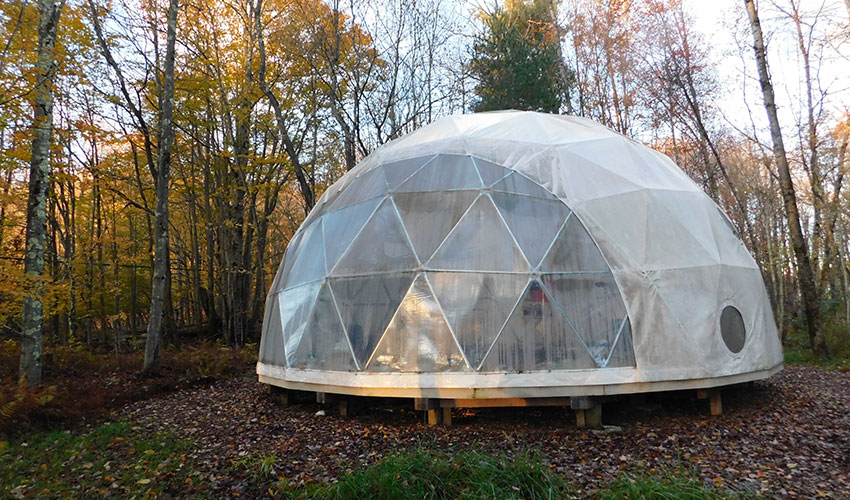
C. Lavender is an NYC-based artist and healer. In her multidisciplinary practice, she uses sound as a medium for music expression and for bioenergy channelling. Through live performances, installations, videos, lectures and workshops, C. Lavender creates immersive sonic environments, treating the act of listening as cardinally corporeal and cathartic.
The perspective on sound as a predominantly physical phenomenon is influenced by the fact that C. Lavender studied Deep Listening with composer and music pioneer Pauline Oliveros, who coined the term and founded Deep Listening Institute in Kingston (NY), now the Center For Deep Listening at Rensselaer. The practice of Deep Listening means perceiving sound beyond what meets the ears.
To listen, not just to hear, means to absorb through the skin, to be aware of every vibration passing through the porous physicality and millions of cells that constitute one’s body. Among diverse forms of the Deep Listening practice, there are sonic meditations, bodywork or interactive performance. Promoting experimentation, improvisation, collaboration and playfulness, the practices are used to heighten awareness of both internal and external sonic environments.
After having spent time volunteering at the Deep Listening Institute, C. Lavender took on the role of an educator and, in 2016, created a full curriculum on the theme of the science of sound and led classes for children called “All Ears”. Commissioned by Experimental Sound Studio in Chicago (IL) in 2019 as part of the Florasonic sound installation program, C. Lavender created ‘Terraforming a Sanctuary’ at Lincoln Park Conservatory’s Fern Room for the visitors to tap into the state of well-being.
Shifting between different brainwave frequencies, the different tones from four audio recordings assisted the listener on their way towards a calmer state. When in there, one would hear the sounds of a Chamberlin keyboard or Spring peeper chorus frogs. Activated through a live performance, which presented work from the artist’s sound healing practice, featuring gongs and singing bowls, the space turned into a meditative ambience.
Terraforming a Sanctuary took on the ideas of forest bathing, known as shinrin-yoku in Japan, memory patterns from sounds, avoiding sound pollution and mediating through listening. These themes were earlier explored by the artist during the workshop “Listening in the Leaves”, which she delivered at The Brooklyn Botanic Garden in 2016.
This year in May, Editions Mego released the artist’s third full-length album titled Myth of Equilibrium. The album was recorded with binaural microphones in a geodesic dome in the Catskill Mountains. The album captures C. Lavender’s interest in field recording, which like sensing atmospheric sounds, goes beyond the capability of ears.
Already previously, the artist experienced working with space as an instrument in itself. For example, for her previous record, Vanishing Light on Hot Releases, was an auditorium of an abandoned school that let C. Lavender explore acoustic properties of architectures. For Myth of Equilibrium, the geodesic dome served as a place for the emergence of a ritualistic sound, meditative reverberations in cycles, including both drilling drones and idyllic raw percussion tones.
Above all, it is the hypnotic quality of sound that unites C. Lavender’s creative output. Beginning as a musician, turning towards art therapy, sound healing was a natural call that C. Lavender could hear. As a healer, she rejuvenates the collectivity of bodily cells, while as an artist, C. Lavender brings different bodies together, employing the vibratory power of sonic resonance, for us to learn how we bond and how we connect, disseminating an understanding of what it means to live together in a synergetic sync.
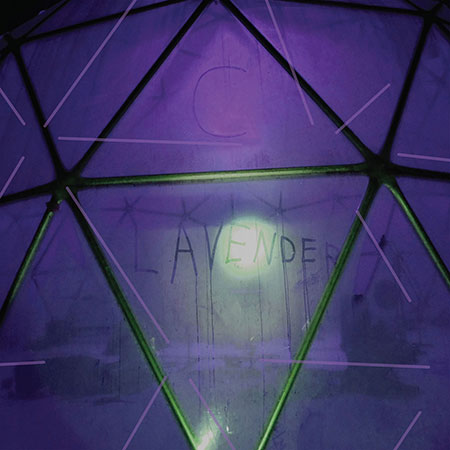
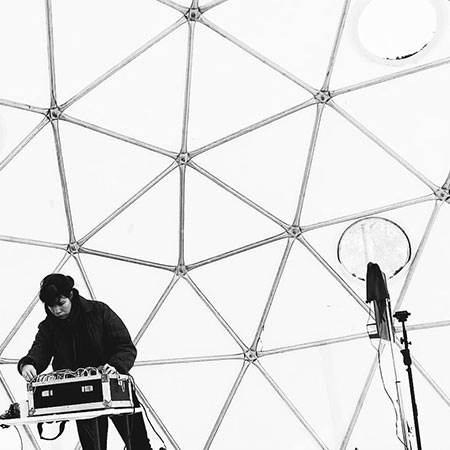
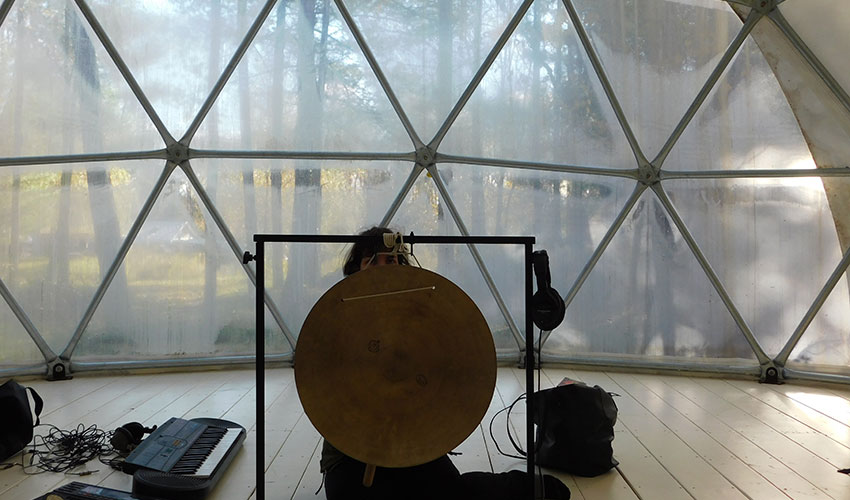
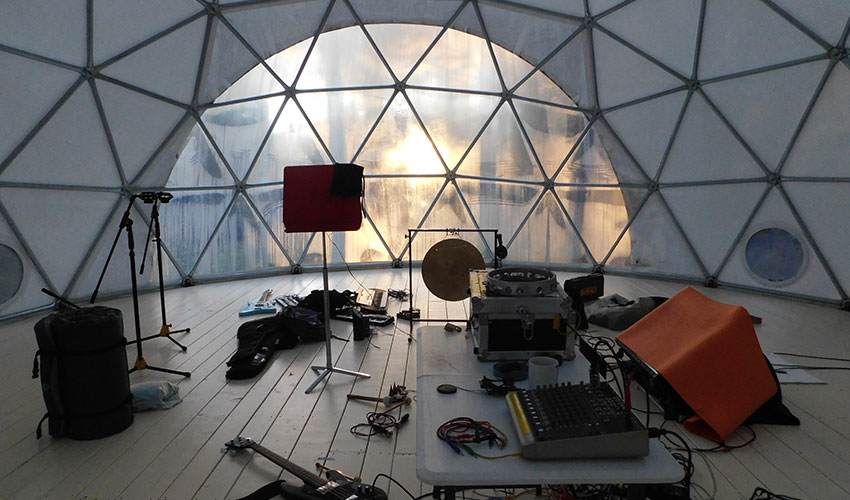
You are a sound artist and also a sound healer; how and when the interest in these disciplines comes about? And how do you see one complementing the other?
I’ve been creating music centred around an interest in sound itself rather than traditional song structures since I was a young teenager. At the same time, I became interested in being a counsellor and pursued psychology and art therapy in college.
Learning & practising sound healing feels like a perfect extension of those early interests. Although I consider the two practices like separate projects, they inform each other all the time. I strive to create accessibility for those in the artistic community to seek out healing, as it can often be a difficult process to navigate.
In terms of research and artistic experimentation, how important was it for you to study Deep Listening with its founder Pauline Oliveros? How did your perception of sound change?
Studying “Deep Listening” with Pauline Oliveros was very influential for me. I learned to let sounds unfold with time and to have more patience with my creative work. Through Pauline, I began to start to explore the immersive nature of sound, the physical nature of sound and how our bodies connect to it, which then filtered into my sound healing work.
You also research and work with field recording in your compositions. What is your interest in working with and incorporating them in your compositions?
When working with field recording, I can get a sense of sound in a very intricate and heightened way beyond the capability of my ears. Field recording creates a way to expand my hearing range and really hone in on sounds that may otherwise be inaudible or in the distance. I’m more interested in capturing atmospheric sounds and moments through field recording than trying to be a documentarian.
Myth of Equilibrium, your recently released new album, was recorded in a geodesic dome in the Catskill mountains of New York. Why a geodesic dome? What was the intellectual process behind the inception of these recordings? And what are you exploring more on the technical side?
Over five years ago, a friend connected me with a recording studio called Outlier Inn that had a geodesic dome on the same property. In the past several years, I’ve been interested in recording in unique environments and creating site-specific works.
My previous record, “Vanishing Light” on Hot Releases, was recorded primarily in the auditorium of an abandoned school. I was interested in the acoustic properties of the geodesic dome, its essential reflections everywhere, yet permeable.
The malleability of the space was very interesting to me, as recording there felt like a collaboration with nature. Similar to my interest in field recording, the microphones picked up sounds from outside the walls of the dome in nature that I was unable to hear at the time.
By utilising binaural microphones to record, I was able to capture that spherical space in a way to replicate the sensations of listening in there closer than if it were a traditional stereo recording.
You have also recently published an album with Aaron Dilloway, Secret Destroyed Instantly. How was this collaboration like? And what was the catalytic process for its development?
Secret Destroyed Instantly was recorded when Aaron was in a residency for the transmission/radio arts organization Wave Farm in Acra (NY).
I had done a residency with Wave Farm a couple of years before, and when I found out he was there, I visited to attend a workshop he was teaching about making tape loops. Aaron was working on a separate project for his residency, but after hanging out by a campfire for hours after the workshop, we decided to record together.
I was generating many of the sounds, and Aaron was creating live loops and changing their speeds of them. One of the sounds included was a set of chimes created by Fluxus artist Dick Higgins from Wave Farm’s collection.
As a sound healer, you’ve also been studying brain waves and neural activity; what has been your main finding?
I’m very interested in the phenomena of “brainwave entrainment,” how our brainwaves sync to external sources such as sound or light. It’s often a subconscious experience that regularly occurs in our daily lives but gets ignored. The hypnotic qualities of sound place a person into a space where they are present, yet alluding to time is incredibly important to healing and creative processes as it can help us tap into a state of flow.
From your experience, how can sound help us to cope with challenging situations like the one we are enduring now?
Our world has gone a bit quieter than it has been previously, and that makes space for observance and reflection. Of course, with observance and reflection can come an awareness of injustice, suffering, anguish and emotional turmoil as parts of our lives that may have previously been hidden under a noisy blanket are suddenly revealing themselves loud and clear. If we approach this new listening space with compassion, empathy and a willingness to rectify what we can and accept that which we cannot, we can use it as a time to tune in to our sense of place in the world through listening and finally acknowledge sounds which once were inaudible.
What is your chief enemy of creativity?
During this time, I have been finishing up writing my book Transcendent Waves, which will be published by Anthology Editions this Winter. The book explains my research into the neural networks that utilise similar portions of the brain to engage in listening and fostering creativity. I delve into many aspects of the creative process in the book, but an example of how creative blockages can occur includes not being receptive to those moments when creativity strikes. It can happen at any moment, but if we don’t allow ourselves to dive down the rabbit hole a bit or at least write our thoughts down, they often drift away.
You couldn’t live without…
My gong for meditation & sound healing, and Earl Grey tea.





